The strategies that drive a high performance People culture
Steve Rockey, People Director at The PIG Hotels, is joined by Sona's VP of Hospitality, Paul Watson, in conversation on the culture strategies that deliver high performance teams.
Building a staff schedule couldn’t be easier.
Reduce payroll errors with real-time T&A.
Fill 50% more shifts with your own employees.
Ensure shifts are covered even if you're understaffed.
Manage absence requests and approvals.
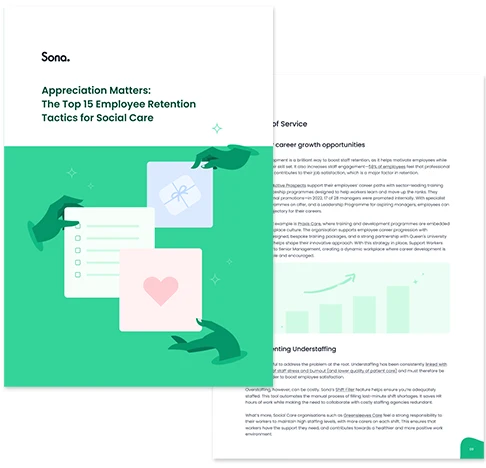
Practical ways to boost team morale with proven examples from across the sector.
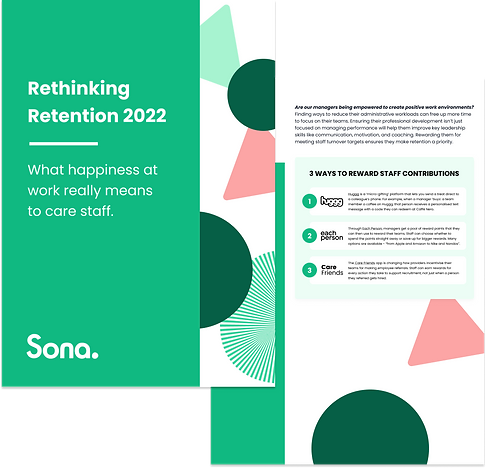
Find out what care employees say matters to them most at work.
Search and view employees with customised permission levels.
Key employment information all in one place.
Store visas, professional certifications and more with easy access.
Control personal and operational details of your staff.
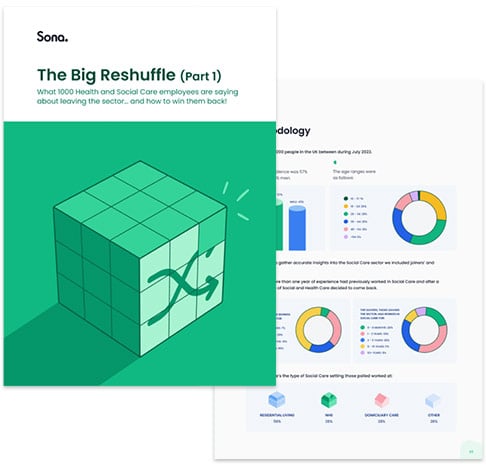
Why are people leaving Social Care, and where are they going?
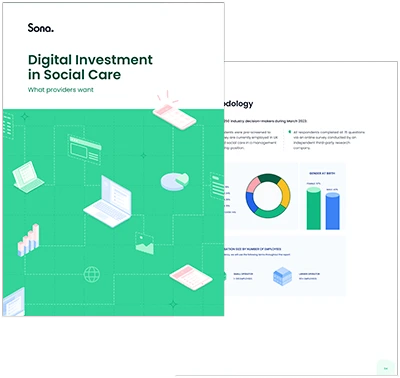
We asked 250 Social Care leaders about their attitudes towards digitisation and their plans for the next 12 months...
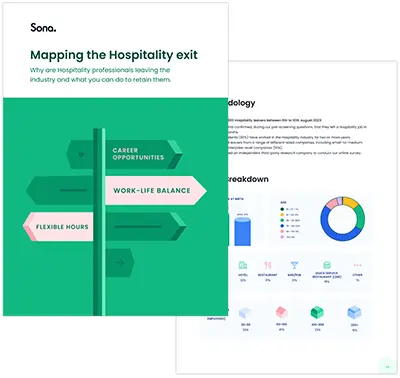
Why are Hospitality workers leaving the industry, and what can you do to retain them?
Share updates with a single click.

Staff can see relevant messages in one place.
Request post-shift feedback from staff.
Recognise staff contributions by sending them praise.
Identify staff at risk of churning.
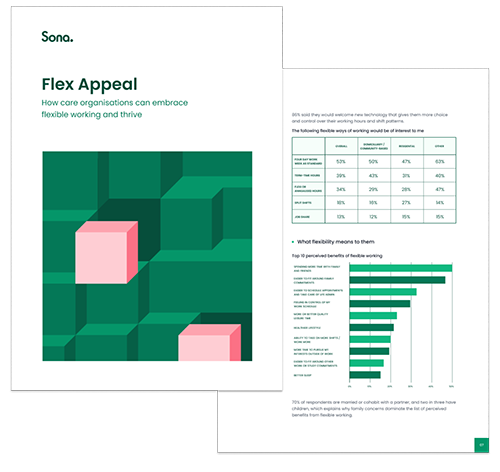
How care organisations can embrace flexible working and thrive.
Maintain quality of care and reduce costs.
Maximise profitability through AI-powered forecasting & scheduling.
Elevate your operational efficiency and guest satisfaction.
Streamline operations across sites.
Developed alongside Social Care experts with decades of combined experience.
See why we are the leading user-friendly, end-to-end platform that prioritises both efficiency and wellbeing.
The Sona Partner Network is an ecosystem of solution experts and complementary technologies.
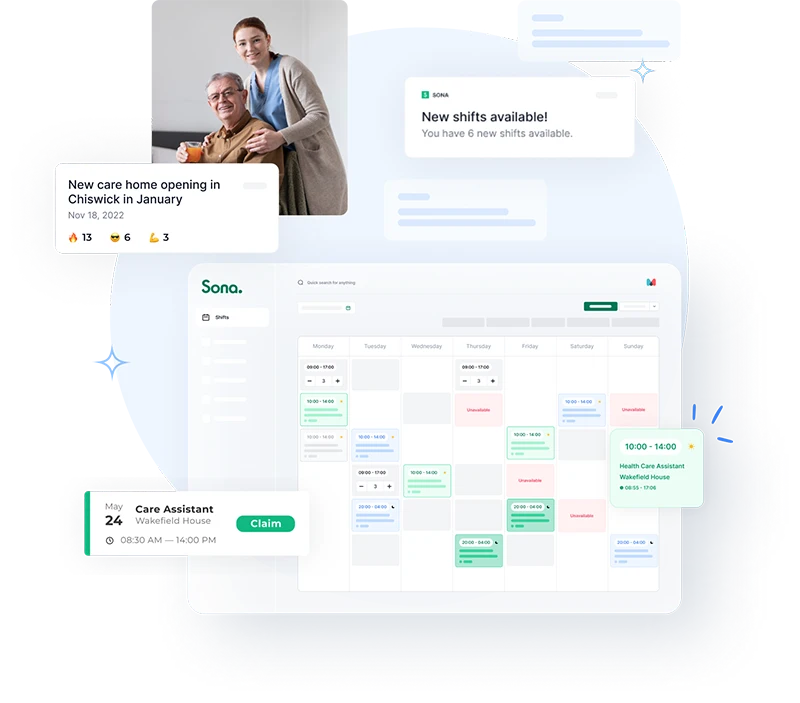
Give staff greater visibility of shifts available to work, with a simple "shift claim" process to increase their income.
Improve employee engagement and retention with a seamless employee communication platform.
Happier staff provide greater customer experiences, which in turn drives return rates, revenues and recommendations.
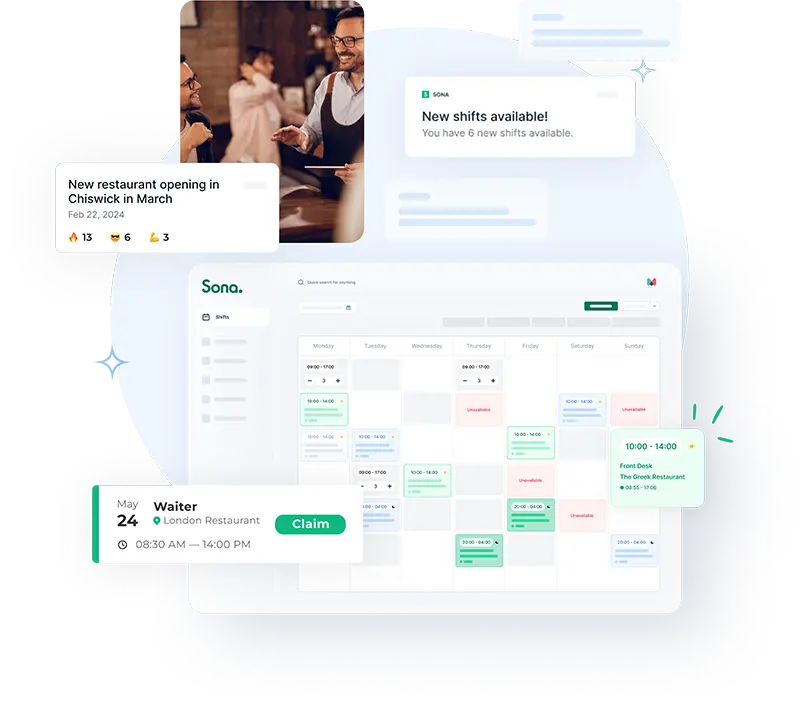
Give staff greater visibility of shifts available to work, with a simple "shift claim" process to increase their income.
Improve employee engagement and retention with a seamless employee communication platform.
Happier staff provide greater customer experiences, which in turn drives return rates, revenues and recommendations.
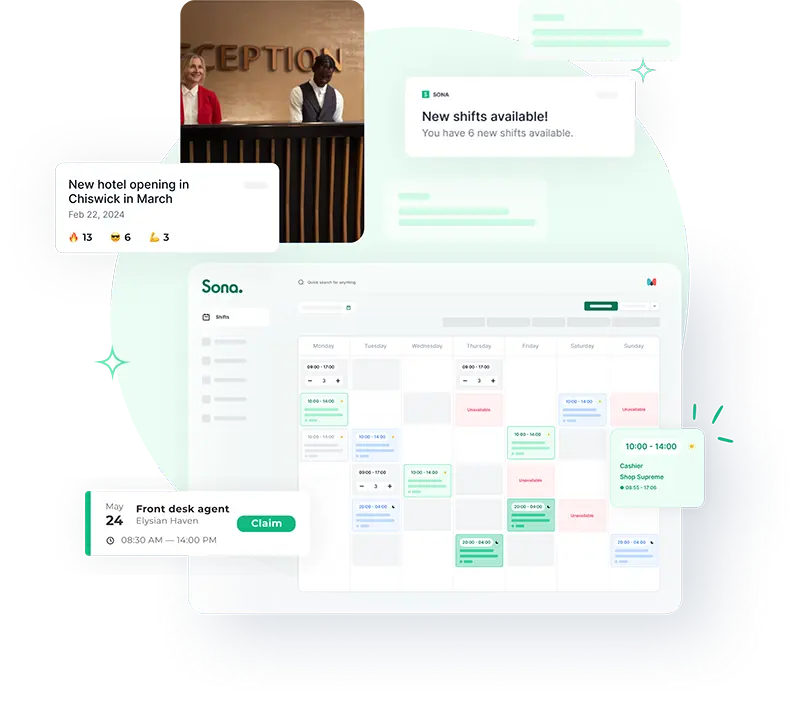
Meet the Sona team online with our webinar series or in-person at an event near you.
New research, insights, and strategies for frontline leaders.
Downloadable templates, reports and guides from Sona.
Stay up to date with the latest Sona news and research.
Learn how our customers are transforming their people operations.
| 4 min read
Steve Rockey, People Director at The PIG Hotels, is joined by Sona's VP of Hospitality, Paul Watson, in conversation on the culture strategies that deliver high performance teams.
| 7 min read
This article explores 5 common drawbacks of legacy tools and how next-generation, bottom-up architecture unlocks revenue growth.
| 9 min read
This essential guide explains the evolution of WFM and why AI-driven technologies will influence the way organisations are run in the long-term.
PUBLISHED: October 2024
Do you know how the frontline feels about new tech?
Sona’s most recent 1,000 person survey delved into the motivations of both leavers and joiners to the sector.
PUBLISHED: August 2024
What motivates the next generation of Care professionals to stay in the sector?
PUBLISHED: August 2024
Ben, our CTO, will walk you through Sona's AI features designed specifically for large Hospitality providers.
Everything you need to know about Next-Generation Workforce Management
9 minute read
Workforce Management (WFM) systems unify an organisation’s capabilities to better allocate resources. These systems have had a steady technological evolution, from basic digitised paperwork, to management software to current AI and machine learning capabilities.
This essential guide explains the evolution of WFM and why AI-driven technologies will influence the way organisations are run in the long-term.
Industry agnostic systems were introduced in the early 2000s. These systems feature in every sector and represent a significant upgrade from paper and spreadsheets. They allow managers to share schedules with their teams faster and safer than before.
They introduced the copy and paste calendar-style schedule templates which inspired the customisable templates of later generations. These templates help larger companies better manage the schedules of thousands of staff and reduce the time needed to do it.
Departments are still siloed as a result and teams often revert to print outs and personal emails to share information.
Cloud software developments in the late 2010s made it possible for staff to keep updated on their schedules anytime without the need to install software on a computer. Coupled with the proliferation of mobile apps during the same time period, Gen 2 represented an upgraded WFM ecosystem.
Organisations of different sizes across multiple sectors benefit from the flexibility Gen 2 offers. User experience improved which meant shorter training time and fewer software specialists.
While Gen 2 providers do offer a mobile app for frontline employees, the UX and UI often lags behind the consumer-grade design that employees use outside of the work context.
Beyond the usability, the technology ecosystems cannot be seamlessly synchronised because there are no strong integrations with sector-specific vendors. This means an increase in admin time, duplicate data entry and out-of-sync manual workarounds.
Next-generation solutions have grown organically from the learnings of Gen 1 and Gen 2. Combined with their focus on deep sector expertise, the result is a sector-specific, cloud-based system designed with consumer-grade UX.
This signals the end of stand-alone point solutions. Instead, the goal becomes integrating scheduling completely with HR, Payroll, Communications, and more. Workflows for staff at every level of an organisation work in harmony with a holistic end-to-end experience.
At the core of a next generation solution stands their code base. Based on a cutting-edge programming language called Elixir, they use the technology that enabled tools like WhatsApp to go from a few thousand users to billions in a short amount of time.
Next generation solutions are built with consumer-grade standards to match the accessibility of personal apps workforces are used to. This makes the transition to new tech much smoother and increases adoption rate.
Managers get prompted with real-time nudges to approve suggestions on scheduling, forecasting and resource allocation, adding their expertise and human touch to truly intelligent management.
Unlike legacy systems, an AI based solution contributes to increased revenue. Large Language Models simplify millions of data points and don’t overwhelm managers with graphs.
Instead, prompting decision making by surfacing crystal clear insights and their implication. Each decision on agency use or shift allocation increases potential for revenue capture.
From better deployment of frontline workers to better allocation of resources, faster and more accurate decision making means happier and less overwhelmed staff.
A concrete example can be found in the Care sector, where better resource allocation means not just a decrease in agency costs, but increased staff retention.
By enabling sustainable growth and boosting staff wellbeing, these solutions help drive revenue, not just cut costs.
To simplify calculating the ROI of implementing new tech, we've pulled together this useful guide.
For organisations looking to move from generic systems or specialised legacy providers, this is where they will experience the biggest upgrade.
HR, Scheduling and Payroll can work in sync with each other with perfectly integrated workflows. All teams on the same page means minimised risk for human error.
For teams looking to transform their digital solutions, planning what to take into consideration is essential.
Sector-specific knowledge combined with the flexibility of this new programming language means they easily accommodate the complex demands of different sectors.
Their ability to process large amounts of data and consider multiple variables, means many sectors can make use of the forecasting capabilities. Care operators and large Hotel groups can rise to meet their specific challenges while adjusting their staffing needs accordingly.
The flexibility of next generation solutions and their sector specific specialisations mean they integrate with separate products such as eMAR or POS systems. This spells the long awaited extinction of double data entry to reduce admin time and cost as well as the risk of manual errors.
By using a WFM solution that is continuously adapting to new data sources and evolving alongside industry conditions, operations remain one step ahead.
Its scalability, cutting-edge technology and AI-driven insights means leaders stay ahead of trends. Enabling anticipation and reflexive responses to dynamic changes before or as they happen. This allows leaders to keep their competitive edge in an ever-evolving market.
Sona is building the next generation of WFM with a truly intelligent platform that enables organisational leaders in complex, multi-location enterprises to put the right people in the right place at the right time; and to seamlessly manage their workforce end-to-end.
Would you like to learn more about how our next-generation solution can help your organisation? Book a quick consultation here.
If you liked this article, why not subscribe to our newsletter to get the latest news and views delivered straight to your inbox?
7 min read
This article explores 5 common drawbacks of legacy tools and how next-generation, bottom-up architecture unlocks revenue growth.
10 min read
Learn when it's time to move on from pen & paper, a legacy system, or a non-Care specific software.
6 min read
We’re excited to announce that Sona has raised £22m to help large organisations move from legacy systems to a truly intelligent AI-driven WFM solution.